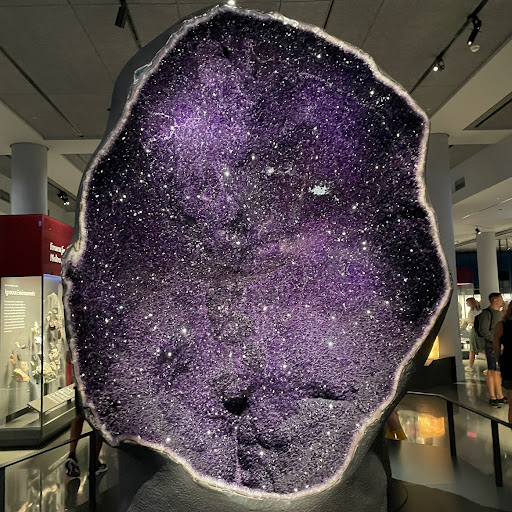Qi I Zhao
age ~51
from Potomac, MD
- Also known as:
-
- Qi Zaho
- Qi I Zhar
- Ai Zhao
- Zaho Qi
- Phone and address:
- 10809 Kirkwall Ter, Rockville, MD 20854
Qi Zhao Phones & Addresses
- 10809 Kirkwall Ter, Potomac, MD 20854
- Rockville, MD
- Reedville, VA
- Chicago, IL
- 68 97Th St, New York, NY 10029 • (212)8604389
Work
-
Company:Institute for food safety and health, iit - Chicago, ILAug 2013
-
Position:Research assistant
Education
-
School / High School:Illinois Institute of Technology- Chicago, IL2012
-
Specialities:Master of Food Safety and Technology
Skills
Software: MS Office software • Angilon ChemStation and Angilon MassHunt... • GC-MS/MS • QQQ LC-MS Food Safety Skills: Trained in... • GMP • SSOP • GLP
License Records
Qi Zhao
License #:
08191 - Expired
Category:
Accountants
Type:
Certified Public Accountant
Qi Zhao
License #:
08191 - Active
Category:
Accountants
Issued Date:
Oct 18, 2016
Expiration Date:
Jun 30, 2019
Type:
Certified Public Accountant
Us Patents
-
Isolated Human G-Protein Coupled Receptors, Nucleic Acid Molecules Encoding Human Gpcr Proteins, And Uses Thereof
view source -
US Patent:20020053091, May 2, 2002
-
Filed:Mar 26, 2001
-
Appl. No.:09/816685
-
Inventors:Ishwar Chandramouliswaran - Silver Spring MD, US
Qi Zhao - Gaithersburg MD, US
Karen Ketchum - Germantown MD, US
Valentina Di Francesco - Rockville MD, US
Ellen Beasley - Darnestown MD, US -
International Classification:A01K067/00
C07H021/04
C12P021/02
C12N005/06
C07K014/705 -
US Classification:800/008000, 530/350000, 435/069100, 435/325000, 435/320100, 536/023500
-
Abstract:The present invention provides amino acid sequences of peptides that are encoded by genes within the Human genome, the GPCR peptides of the present invention. The present invention specifically provides isolated peptide and nucleic acid molecules, methods of identifying orthologs and paralogs of the GPCR peptides and methods of identifying modulators of the GPCR peptides.
-
Isolated Human G-Protein Coupled Receptors, Nucleic Acid Molecules Encoding Human Gpcr Proteins, And Uses Thereof
view source -
US Patent:20020064822, May 30, 2002
-
Filed:Mar 26, 2001
-
Appl. No.:09/816087
-
Inventors:Ming-Hui Wei - Germantown MD, US
Wei Shao - Frederick MD, US
Qi Zhao - Gaithersburg MD, US
Valentina Di Francesco - Rockville MD, US
Ellen Beasley - Darnestown MD, US -
International Classification:C12P021/02
C12N005/06
C12Q001/68
C07H021/04
C07K014/705 -
US Classification:435/069100, 435/006000, 435/325000, 530/350000, 536/023500
-
Abstract:The present invention provides amino acid sequences of peptides that are encoded by genes within the Human genome, the GPCR peptides of the present invention. The present invention specifically provides isolated peptide and nucleic acid molecules, methods of identifying orthologs and paralogs of the GPCR peptides and methods of identifying modulators of the GPCR peptides.
-
Isolated Human G-Protein Coupled Receptors, Nucleic Acid Molecules Encoding Human Gpcr Proteins, And Uses Thereof
view source -
US Patent:20030049790, Mar 13, 2003
-
Filed:Oct 15, 2002
-
Appl. No.:10/270144
-
Inventors:Ming-Hui Wei - Germantown MD, US
Qi Zhao - Gaithersburg MD, US
Anibal Cravchik - Gaithersburg MD, US
Valentina Di Francesco - Rockville MD, US
Ellen Beasley - Darnestown MD, US -
Assignee:APPLERA CORPORATION - Norwalk CT
-
International Classification:C12P021/02
C12N005/06
G01N033/53
C07H021/04
C07K014/705 -
US Classification:435/069100, 435/320100, 435/325000, 530/350000, 536/023500, 435/007100
-
Abstract:The present invention provides amino acid sequences of peptides that are encoded by genes within the Human genome, the GPCR peptides of the present invention. The present invention specifically provides isolated peptide and nucleic acid molecules, methods of identifying orthologs and paralogs of the GPCR peptides and methods of identifying modulators of the GPCR peptides.
-
Isolated Human G-Protein Coupled Receptors, Nucleic Acid Molecules Encoding Human Gpcr Proteins, And Uses Thereof
view source -
US Patent:20030059891, Mar 27, 2003
-
Filed:Oct 9, 2002
-
Appl. No.:10/266643
-
Inventors:Ming-Hui Wei - Germantown MD, US
Wei Shao - Frederick MD, US
Qi Zhao - Gaithersburg MD, US
Valentina Di Francesco - Rockville MD, US
Ellen Beasley - Darnestown MD, US -
Assignee:APPLERA CORPORATION - Norwalk CT
-
International Classification:C12P021/02
C12N005/06
C07K014/705
C07H021/04 -
US Classification:435/069100, 435/320100, 435/325000, 530/350000, 536/023500
-
Abstract:The present invention provides amino acid sequences of peptides that are encoded by genes within the Human genome, the GPCR peptides of the present invention. The present invention specifically provides isolated peptide and nucleic acid molecules, methods of identifying orthologs and paralogs of the GPCR peptides and methods of identifying modulators of the GPCR peptides.
-
Isolated Human G-Protein Coupled Receptors, Nucleic Acid Molecules Encoding Human Gpcr Proteins, And Uses Thereof
view source -
US Patent:20040033565, Feb 19, 2004
-
Filed:Aug 13, 2003
-
Appl. No.:10/639708
-
Inventors:Ishwar Chandramouliswaran - Silver Spring MD, US
Qi Zhao - Gaithersburg MD, US
Karen Ketchum - Germantown MD, US
Valentina Di Francesco - Rockville MD, US
Ellen Beasley - Darnestown MD, US -
Assignee:APPLERA CORPORATION - Norwalk CT
-
International Classification:C07K014/705
C07H021/04
C12P021/02
C12N005/06
C12N015/86
C07K017/00
C07K014/00
C07K001/00
C12N005/02
C12N005/00
C12N015/74
C12N015/70
C12N015/63
C12N015/09
C12N015/00
C12P021/06 -
US Classification:435/069100, 435/320100, 435/325000, 435/456000, 530/350000, 536/023500
-
Abstract:The present invention provides amino acid sequences of peptides that are encoded by genes within the Human genome, the GPCR peptides of the present invention. The present invention specifically provides isolated peptide and nucleic acid molecules, methods of identifying orthologs and paralogs of the GPCR peptides and methods of identifying modulators of the GPCR peptides.
-
Isolated Human G-Protein Coupled Receptors, Nucleic Acid Molecules Encoding Human Gpcr Proteins, And Uses Thereof
view source -
US Patent:20040076951, Apr 22, 2004
-
Filed:May 31, 2001
-
Appl. No.:09/867570
-
Inventors:Ming-Hui Wei - Rockville MD, US
Qi Zhao - Rockville MD, US
Trevor Woodage - Rockville MD, US
Valentina Di Francesco - Rockville MD, US
Ellen Beasley - Rockville MD, US -
International Classification:C12Q001/68
C07H021/04
C07K014/705 -
US Classification:435/006000, 435/069100, 435/320100, 435/325000, 530/350000, 536/023500
-
Abstract:The present invention provides amino acid sequences of peptides that are encoded by genes within the Human genome, the GPCR peptides of the present invention. The present invention specifically provides isolated peptide and nucleic acid molecules, methods of identifying orthologs and paralogs of the GPCR peptides and methods of identifying modulators of the GPCR peptides.
-
Human Monoclonal Antibodies That Bind Insulin-Like Growth Factor (Igf) I And Ii
view source -
US Patent:20140044720, Feb 13, 2014
-
Filed:Apr 11, 2012
-
Appl. No.:14/111507
-
Inventors:Dimiter S. Dimitrov - Frederick MD, US
Zhongyu Zhu - Frederick MD, US
Qi Zhao - Frederick MD, US -
Assignee:Department of Health and Human Service - Besthesda MD
-
International Classification:C07K 16/22
G01N 33/74 -
US Classification:4241361, 53038815, 4241421, 536 2353, 436501, 4353201, 43525233, 435336, 514 44 R
-
Abstract:Disclosed herein are human monoclonal antibodies that specifically bind both IGF-I and IGF-II with picomolar affinity and potently inhibit the IGF-IR signal transduction function. These antibodies are active in both an IgG and a scFv format. Bispecific forms of these antibodies are also disclosed. Nucleic acids encoding these antibodies, vectors including these nucleic acids, and host cells transformed with these vectors are also disclosed herein. Also disclosed are pharmaceutical compositions including these antibodies. Methods are provided for treating a subject with cancer and for inhibiting phosphorylation of the insulin-like growth factor-I receptor. Methods are also provided for diagnosing cancer.
-
Gan-Cnn For Mhc Peptide Binding Prediction
view source -
US Patent:20190259474, Aug 22, 2019
-
Filed:Feb 18, 2019
-
Appl. No.:16/278611
-
Inventors:- Tarrytown NY, US
Ying Huang - Ardsley NY, US
Wei Wang - Elmsford NY, US
Qi Zhao - Chappaqua NY, US -
International Classification:G16C 20/70
G16C 99/00
G16C 60/00
G16C 20/30
G16C 20/40
G16C 20/50
G16C 20/90 -
Abstract:Methods for training a generative adversarial network (GAN) in conjunction with a convolutional neural network (CNN) are disclosed. The GAN and the CNN can be trained using biological data, such as protein interaction data. The CNN can be used for identifying new data as positive or negative. Methods are disclosed for synthesizing a polypeptide associated with new protein interaction data identified as positive.
Name / Title
Company / Classification
Phones & Addresses
Principal
WENZHOU 99 CENT PLUS INC
Ret Gifts/Novelties
Ret Gifts/Novelties
1844 Bath Ave, Brooklyn, NY 11214
Resumes

Georgetown University Law Center
view sourceLocation:
Washington, DC
Industry:
Law Practice
Work:
Kenyon & Kenyon
Associate Patent Attorney
Icahn School of Medicine at Mount Sinai Aug 2003 - Jul 2007
Postdoctoral Fellow
Aug 2003 - Jul 2007
Georgetown University Law Center
Associate Patent Attorney
Icahn School of Medicine at Mount Sinai Aug 2003 - Jul 2007
Postdoctoral Fellow
Aug 2003 - Jul 2007
Georgetown University Law Center
Education:
Peking University
University of Illinois at Chicago
Doctorates, Doctor of Philosophy, Pharmacology Georgetown University Law Center
Doctor of Jurisprudence, Doctorates, Law
University of Illinois at Chicago
Doctorates, Doctor of Philosophy, Pharmacology Georgetown University Law Center
Doctor of Jurisprudence, Doctorates, Law
Skills:
Patent Prosecution
Patent Litigation
Patents
Intellectual Property
Patentability
Prosecution
Registered Patent Attorney
Litigation
Legal Research
Legal Writing
Client Counseling
Legal Opinions
Litigation Support
Patent Applications
Patent Litigation
Patents
Intellectual Property
Patentability
Prosecution
Registered Patent Attorney
Litigation
Legal Research
Legal Writing
Client Counseling
Legal Opinions
Litigation Support
Patent Applications

Fellow-Bioinformatics, Group Leader
view sourceLocation:
9712 Medical Center Dr, Rockville, MD 20850
Industry:
Biotechnology
Work:
Regeneron Pharmaceuticals, Inc.
Fellow-Bioinformatics, Group Leader
Ludwig Collaborative Laboratory Department of Neurosurgery Johns Hopkins University School of Med Sep 2010 - Aug 2014
Assistant Professor
J. Craig Venter Institute Sep 2008 - Sep 2010
Assistant Professor
Tigr Mar 2004 - Aug 2008
Senior Bioinformatics Scientist
Celera Corporation May 1999 - Feb 2004
Senior Scientist
Fellow-Bioinformatics, Group Leader
Ludwig Collaborative Laboratory Department of Neurosurgery Johns Hopkins University School of Med Sep 2010 - Aug 2014
Assistant Professor
J. Craig Venter Institute Sep 2008 - Sep 2010
Assistant Professor
Tigr Mar 2004 - Aug 2008
Senior Bioinformatics Scientist
Celera Corporation May 1999 - Feb 2004
Senior Scientist
Education:
The University of Texas Health Science Center at Houston Jan 1, 1991 - Dec 31, 1996
The University of Texas M.d. Anderson Cancer Center 1991 - 1996
Doctorates, Doctor of Philosophy, Genetics Fudan University
Bachelors, Bachelor of Science, Biochemistry
The University of Texas M.d. Anderson Cancer Center 1991 - 1996
Doctorates, Doctor of Philosophy, Genetics Fudan University
Bachelors, Bachelor of Science, Biochemistry
Skills:
Genomics
Bioinformatics
Genetics
Sequencing
Cancer Genomics
Biomarkers
Computational Biology
Cancer
Molecular Biology
Sequence Analysis
Transcriptomics
Dna Sequencing
Technology Transfer
Lifesciences
Bioinformatics
Genetics
Sequencing
Cancer Genomics
Biomarkers
Computational Biology
Cancer
Molecular Biology
Sequence Analysis
Transcriptomics
Dna Sequencing
Technology Transfer
Lifesciences

Qi Zhao
view source
Qi Zhao
view source
Qi Zhao
view source
Qi Zhao
view source
Qi Zhao
view source
Qi Zhao
view sourceYoutube
So Close (Part 3)
Starring Shu Qi Zhao Wei Karen Mok
-
Category:Entertainment
-
Uploaded:30 Jun, 2006
-
Duration:9m 55s
so close (part 1)
starring Shu Qi Zhao Wei Karen Mok
-
Category:Entertainment
-
Uploaded:30 Jun, 2006
-
Duration:9m 47s

Qi Zhao
view source
Qi Zhao
view source
Qi Feng Zhao
view source
Qi Zhao
view source
Qi Zhao
view source
Qi Zhao
view source
Qi Zhao
view source
Qi Zhao
view sourceClassmates

University of Waterloo, O...
view sourceGraduates:
Qi Zhao (2006-2010),
Walter Kasper (1975-1979),
Jamie Lowrie (1992-1996),
Sera McDonalds (2000-2004),
Larry Stewart (1978-1982)
Walter Kasper (1975-1979),
Jamie Lowrie (1992-1996),
Sera McDonalds (2000-2004),
Larry Stewart (1978-1982)
Googleplus

Qi Zhao
Lived:
Chicago, IL
Nanchang, Jiangxi, China
Zaozhuang, Shandong, China
Nanchang, Jiangxi, China
Zaozhuang, Shandong, China
Work:
UGRIDD Corporation - Senior Engineer (2011)
Education:
Illinois Institute of Technology
Tagline:
Just do IT~

Qi Zhao
Work:
Microsoft Research Asia - Intern (2010-2011)
Education:
University of Minnesota - Computer Science, HIT - EE

Qi Zhao
Work:
UCSC - RESEARCH ASSISTANT (2010)
NUS - RESEARCH ENGINEER (2010-2010)
NUS - RESEARCH ENGINEER (2010-2010)

Qi Zhao

Qi Zhao
Education:
University of Illinois at Chicago

Qi Zhao
Education:
FH-Aachen

Qi Zhao
Education:
Adelphi University

Qi Zhao
About:
高山仰止 景行行止
Myspace
Get Report for Qi I Zhao from Potomac, MD, age ~51



